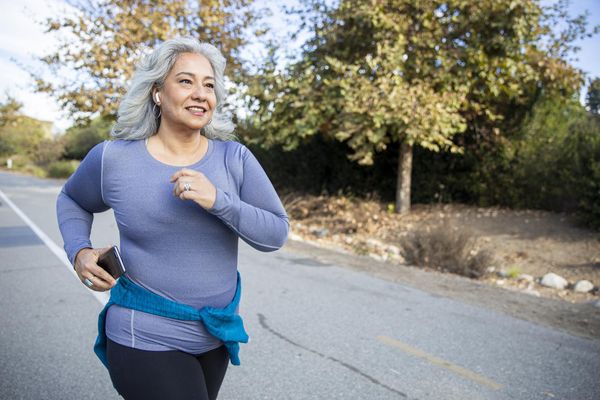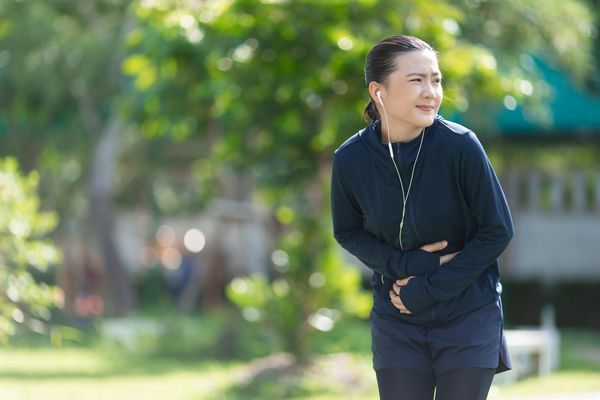Maybe you already know that "no pain, no gain" is a fitness myth. You don't gain from pain; instead, if you workout until (or after) you have pain, you can injure yourself.
Fitness misconceptions such as "no pain, no gain" or "women who lift weights get bulky muscles" abound (that second belief is also not true—our biology makes it nearly impossible). Because of such erroneous ideas, many of us exercise incorrectly or avoid being physically active at all.
Even if you don't fall for the two fitness follies above, there are plenty more you might believe. Here are 7 common exercise misconceptions, with realistic suggestions for effective activity:
Fitness Folly #1: Ab Crunches Will Flatten Your Mid-Section
How many sit-ups or crunches does it take to turn tummy fat into tight muscle? The answer is: none—you can't turn fat tissue into muscle. Contracting your abdominal muscles in a crunch "will strengthen those fibers, but has nothing to do with the fat sitting on top" of those muscles, says Kathy Stevens, MA, a fitness consultant in Ranchos Palos Verdes, CA.
Stevens calls it "wishful thinking" to believe that exercising one spot on your body will take off fat in that location. "We want to hold onto that belief, even though we've been told time and time again that there's no such thing as spot reduction," she says. "Fat loss is systemic."
What to do: Be patient and do activities you enjoy that burn as many calories as possible, such as aerobics, swimming and brisk walking.
Fitness Folly #2: Regular Exercise Keeps Your Balance Strong
You work on your strength and on your endurance, but when was the last time you worked on your equilibrium? Vonda Wright, MD, an orthopedic surgeon at the University of Pittsburgh Medical Center, Pittsburgh, PA, cautions against taking your balance for granted. "When women fall down and break a hip, 50 percent of them don't return to pre-fall function," says Dr. Wright, co-author of the upcoming book Fitness After 40: How to Stay Strong at Any Age.
Muscle strength helps you maintain your equilibrium, but it's not enough, she adds. If your balance is wobbly, you need to do activities that will build it. To test yourself, stand near a table and place your fingertips on the table top. Close your eyes and stand on one leg. You should be able to balance for 20 seconds.
What to do: To increase balance, Dr. Wright suggests getting into the habit of standing on one leg while washing dishes or brushing your teeth. If that becomes easy, close your eyes. For more balance-building ideas, click here.
Fitness Folly #3: You Can Tighten Your Upper-Arm Flab with Weights
You may be familiar with "turkey arms"—the wobbling flap of flab that hangs below the upper area of an outstretched arm. These shaky sections are especially common if you're in midlife or older. Many women try to banish the unsightly flesh by lifting weights, only to discover that not much seems to change.
Sadly, that flab in the tricep area can't be targeted, according to Irv Rubenstein, PhD, an exercise physiologist, teacher and certified personal trainer in Nashville, TN. "Women tend to deposit fat there, and with the change in collagen over time (with age), the area loses tautness and texture. It's a nearly perfect storm," Dr. Rubenstein says. Gravity finishes off the job. "Like the skin that starts to sag over your knees, it's the same principle," he adds. Swell news, huh?
What to do: Forget about that one spot, but do resistance training with weights or bands to build strength and overall functioning.
Fitness Folly #4: My Arthritis/Weight/Diabetes, etc., Keeps Me from Being Active
When you have an ongoing health concern, your condition can be a great excuse for avoiding fitness activities. Yet, in most cases, being physically active will help reduce your health problems.
Arthritis pain lessens with exercise, as does high blood pressure and insulin resistance. Physical activity will help a weight-loss effort and reduce the cardiovascular and diabetes risks of metabolic syndrome. By choosing the right activities and using medications as prescribed, you can also exercise with asthma or allergies.
What to do: First, see the physician treating your chronic condition and talk about physical activity options. To avoid stress on joints, choose pool activities or bike riding. (For more ideas, click here. Those with asthma or allergies will be helped by exercising indoors, especially during hot or cold weather. Warm, moist air is best for asthma, so swimming is a good choice.
Fitness Folly #5: You Must Lose Weight to Be More Fit
If you're larger, imagine being let off the hook that demands you must lose 20, 30 or more pounds to achieve good fitness. Well, permission granted!
Research conducted with a group of overweight and obese (don't we hate those terms!) women aged 30 to 45, showed that those who accepted their bodies as they were, ate according to their natural signals for hunger and fullness (not dieting) and pursued enjoyable activities instead of regimented exercise had a sharp increase in moderate activity. What's more, they were able to sustain that activity level over time.
"Their overall health measures were amazing—reduced blood pressure and improved cholesterol and psychological factors," compared to a control group that dieted and followed exercise recommendations, says physiologist and nutritionist Linda Bacon, PhD, MA, a researcher at the City College of San Francisco. Dr. Bacon conducted the study and is author of a forthcoming book, Health at Every Size: The Surprising Truth About Your Weight, based on her research findings.
In group meetings during the study, the non-dieters talked about ways to add movement they enjoyed, from shooting baskets with a child to walking to a farther bathroom at work. Although the control group initially lost weight by dieting, both groups were at their starting weights after two years. The non-dieters showed greater fitness, which they kept up with little effort. "You can improve your health dramatically without a change in weight," Dr. Bacon says.
What to do: Accept your body as it is right now. Add physical activity to your life that you find fun. Walking in a natural area is interesting and helps the time pass swiftly. If you like social interaction, play a game with others. Avoid workout classes that make you feel discouraged or self-conscious.
Fitness Folly #6: Drink Lots of Water during Long Workouts
When your spinning class leaves you soaked in sweat or you log a mile on the track, you might stop for a refreshing water break. That's fine—water is great. But drinking too much water during extended exertion can dilute the sodium in your blood, causing a condition called hyponatremia.
"It occurs more in women, especially women running long distances and taking a longer time," says Dr. Rubenstein. The result: you may feel nauseated, confused, lethargic, have cramps or worse. Sports drinks are better for long distances.
What to do: If you're exercising for an hour or less, water is fine, Dr. Rubenstein says. For efforts that last longer, drink 6 to 8 ounces of a sports drink every 15 minutes.
Fitness Folly #7: Exercise Takes Too Much Time and Effort
It's true that you can't be physically active unless you actually get up and move. Once you get past that hurdle, you don't have to push yourself hard. You'll gain fitness benefits from very light to moderate exercise. That benefit is even greater if you are overweight or have been sedentary. As for time, all you need is 30 minutes a day of activity, which you can accumulate in 10-minute chunks.
What to do: Start by using time you ordinarily waste sitting in front of the television. Stand up and do 10 minutes of brisk walking while you watch. You can move around the room or walk in place. Swing your arms to ramp up your results. Do that three times daily and you'll help banish the fitness follies.







